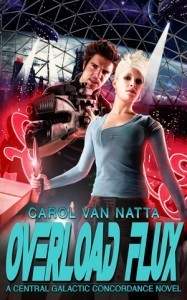Carol Van Natta's Blog, page 33
December 7, 2014
Fiction Categories and Keywords
We humans love patterns – they’re a time saver, so we don’t have to make the same decision each time we come across something new. “Look at that big tawny cat,” thought a dimwitted ancestor, “I saw one pounce on and eat a gazelle last month. I’m not a gazelle, so surely the cat won’t – AAArrrggghhhh!”
Fiction categories and keywords help us find things. At their best, they help us organize massive amounts of data into usable constructs. They save me, as a reader, from having to read through the first 20,000 words of a novel, only to find out it’s not a subject I care for. In the bookstore (online or brick-and-mortar), they help me sail past the stuff that doesn’t interest me.
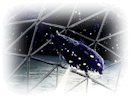 To me as an independent author, however, they feel a bit rigid. One of the reasons I didn’t approach a traditional publisher for my novel, Overload Flux, is because it’s a science fiction-action-romance, and doesn’t fit their standard marketing templates. It’s space opera, too, which is another sub-genre that doesn’t fit neatly into one of their slots.
To me as an independent author, however, they feel a bit rigid. One of the reasons I didn’t approach a traditional publisher for my novel, Overload Flux, is because it’s a science fiction-action-romance, and doesn’t fit their standard marketing templates. It’s space opera, too, which is another sub-genre that doesn’t fit neatly into one of their slots.Some of the problem, I think, is the restrictions of the physical model don’t serve the virtual one. Brick-and-mortar bookstores have limited space, and limited money to invest, so they only buy ten copies of the book, and put them all in one section on one shelf. So my science fiction-action-romance book probably gets shelved in the science fiction because it’s cover doesn’t scream romance. For one thing, the characters aren’t naked. ;–}
In the online world, the bookseller doesn’t have to worry about where to put the book, or how many copies to buy; they’re selling copies of the file, which they only have to store once. So they can easily afford to put my book in both the science fiction and the romance categories, and furthermore, they can afford to create sub-genres to help readers find books. Amazon allows publishers to specify up to five genres, and good use of keywords gets the book in several more (including space opera). B&N, Kobo, iTunes, and Smashwords don’t offer nearly as many categories, and I think they’re doing their readers a disservice.
Fiction Category Mayhem
Science fiction romance (SFR) is a relatively new sub-genre. It used to be lumped into the “futuristic, paranormal, and fantasy” category, where you had to wade through the vampire and shifter novels to find it. Some book sellers (cough *B&N*) still have it that way. On the other hand, if you get to the SFR category on Amazon, you’ll find an amazing number of books that have no business being in that list. (Note to publishers: Meyer’s Twilight series is not SFR, and Garwood’s Rebellious Desire, which is a Regency romance, is not even in the same solar system. And sorry, much as I admire Gabaldon’s Outlander series, time travel doesn’t make it SFR, either.) I like reading SFR, and it’s annoying to have to wade through the crap to find the good stuff. I will say that Smashwords is pretty good at showing relevant listings, but has a rather limited selection.
I get why publishers are tempted to put a book in lots of categories, but I think it’s the same problem that some authors have in determining their audience. There’s this mindset that says, “Pretty much anyone who reads books will love mine!” I hate to be the voice of harsh reality, but no, sweetie, no they won’t. For example, I don’t read historical westerns. I’ve tried a few over the years, and they’re not for me. Selecting the “science fiction romance” category on Amazon for a western will include it in that list, but chances are, all you’ve done is annoy me when I’m trying to find Ruby Lionsdrake’s next Mandrake Co. book or C. E. Kilgore’s next Corwint book, or chance upon a new SFR author.

Watch it there, lady—you got yer romance in my science fiction!
On the flip side, I understand there are readers who don’t want science fiction or fantasy in their romance, or at least think they don’t. Linnea Sinclair says she’s had lots of people tell her they had no idea they liked SF until they read her books. It’s legitimate, I think, to put her books in the science fiction category and in the romance category. Hopefully, her publisher didn’t also put them in with the westerns.
Fiction Keyword Quandary
Booksellers don’t know how to use keywords. There, I’ve said it. B&N is especially bad—try searching for “science fiction romance” and see what I mean (Shelley’s classic Frankenstein is a science fiction romance?!?). Kobo is better, but not immune (Thoreau’s Walden—really?). I can’t speak for iTunes (or iBookstore), since I don’t use it to find content, and the Web version gives me titles and, occasionally, authors. I have no earthly idea how you browse to find something new to read in Apple-land.
As an aside on keywords, I wish authors or publishers would tell me if I’m going to get a little romance in whatever they want me to read, because these days, I’m more inclined to read it if there is. Usually, though not always, blurbs are pretty good at explaining that. They’re less good about sex. I’m happy to read blushing kisses all the way through hot eroticism, as long (A) I’m forewarned, and (B) it furthers the plot. When it’s just pasted in so the book can fit in the “erotic” category, I usually skip ahead. It’s kind of like old musicals from the 1930s — the plot is chugging right along, then comes to a lurching stop while the leading lady (a soprano, natch) sings a sweet song, then starts up again and goes until the next stop, when the leading man (a tenor, natch) sings a manly song, and so forth. It’s worse than riding the local bus at rush hour–it takes two hours to get home.
Adding random keywords or putting the book in all genres doesn’t help anyone. Hard SF readers don’t like to be offered a gooey-center fantasy when they’re looking for a new book to read, and if the blurb and other marketing convince them to buy it, they’re going to be mightily pissed. That said, I like cross-genre books where the mystery element, the science fiction/fantasy element, the steampunk and/or the romance element complement one another. See Linnea Sinclair, Ann Aguirre, Eve Silver, Lindsay Buroker, C. E. Kilgore, Sheryl Nantus, Ruby Lionsdrake, Naline Singh, Jennifer Ashley, Meljean Brook.
OK, I’ve rambled on about this without coming to a conclusion. If you’re reading this, maybe you have some thoughts to share in the comments.
The post Fiction Categories and Keywords appeared first on Carol Van Natta - Author.
December 3, 2014
MOBI file for Kindles – Instructions
So you got this MOBI file from a wonderful independent author, or as a gift from your Uncle Bob, or as a prize in a Cracker Jack box, and now you want to read it on your Kindle? Here’s how to do it, complete with screenshots. You’re welcome.
To get the .MOBI file onto your Kindle, you’ll need to know the email address for your Kindle device, and you’ll need to tell Amazon it’s OK to accept files from your email address. Here’s how:
From most any Amazon.com shopping page, use the menu in the upper right and click on the Your Account button. Select “Manage your Content and Devices” from the dropdown choices.
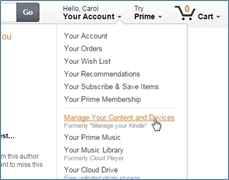
Click the Settings tab.

Scroll about halfway down until you come to the Personal Documents Settings heading. From the list of device(s), make a note of the email address to which you want to read the .MOBI file.

Tell Amazon.com it’s OK to accept content from your email addresses by scrolling a bit until until you come to the Approved Personal Document E-mail List. Click the link for Add a new approved e-mail address.

In the box that appears, enter your email address, then click the Add Address button.

From the email address you just entered in step 5 above, send the .MOBI file as an attachment to the device email you wrote down in step 3.* Wait about fifteen minutes, then turn on your Kindle and select the “Sync and Check for New Items” option. Voilá — the new book should appear.
*NOTES:
Amazon.com will automatically convert the MOBI file to the format needed for your Kindle.
It doesn’t matter what you put in the subject line or the body of your email, because Amazon will ignore it. For your records, you might want to put something like the title and author, e.g., “Overload Flux by Carol Van Natta,” in case you ever need it later.
The post MOBI file for Kindles – Instructions appeared first on Carol Van Natta - Author.
November 30, 2014
Character Flaws vs. Flawed Characters in Romance Writing
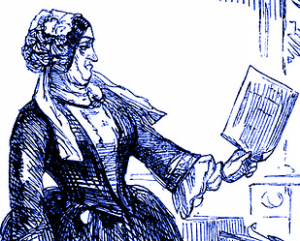 Pet Peeves, Round 2
Pet Peeves, Round 2This is another in my “reader’s pet peeves” series, primarily in the romance genre. (In case you missed it, here was my previous post on pet peeves.) I’m rather annoyed by impossibly beautiful heroines/heroes who don’t know they’re beautiful, and successful people who don’t recognize or value their success. For the most part, they’re flawed characters, not great characters with flaws.
You’re So Beautiful to Me
Let’s say a made-up heroine named “Adora” is physically beautiful enough to turn heads wherever she goes, but she was raised by wolves, or crazy people, or aliens, or whatever. Even if she grew up believing she was ugly as a dishrag, the minute she gets away from her keepers and starts interacting with normal people in the real world, she will quickly discover others think she’s beautiful. It could be an interesting story, how she deals with people suddenly wanting her body, but too often it’s just a lazy device for the love interest to be the one person to convince her she’s beautiful when all others have failed.
You Really, Really Like Me?
A related aspect of this is when Adora, brought up to think she’s ugly (or stupid, or untalented, etc.), discovers she’s beautiful/smart/skilled, and… wait for it… does nothing. No reveling in her new power, no discovering that being admired has responsibilities, no thoughts of revenge against the people who kept her down. Too often, it feels like vindication fantasy for the author instead of justice for the character.
I’m Nothing Without You, Babe
I’m equally annoyed by main characters in contemporary romances who discount or disregard their own success. (Caveat: I haven’t read a lot of these, so my sample could be on the small side.) Let’s say a made-up hero named “Blaze” has become a star rock-and-roll singer, but his success feels hollow because he abandoned the family farm, or quit medical school, or refused to join the Marines like dear old dad. The countless hours rehearsing, memorizing, performing, and starving on the road to success were what—something to pass the time? Again, the admiration of others (not to mention the groupies, the press, the spotlight) would be his first clue that his success is valuable. Yeah, yeah, the feeling of success comes from within, but it’s sure nice when others recognize it too. This too, is often a lazy device for the love interest to be the one person to convince him that he’s a good person when all others have failed. Or even worse, that he’ll only get the girl if he throws away his successful (but hollow!) career and “settles down.” While it’s nice to imagine the hero would change his whole life for love of the heroine, it’s not terribly realistic, and feels like authorial wish fulfillment. Not to mention, it seems awfully controlling of the heroine to expect him to drop everything for her, or at the very least, passive-aggressive when she says “It’ll never work between us—you’re a big star, and I’m just a messenger girl.”
Character flaws will keep me reading, usually well past my bedtime. Flawed characters, on the other hand, usually cause me to skip ahead to the good parts. If you have some thoughts on the subject, I’d love to read them in your comments.
The post Character Flaws vs. Flawed Characters in Romance Writing appeared first on Carol Van Natta - Author.
November 16, 2014
Writing Book Blurbs
Fiction book blurbs—more properly described as “book descriptions”—are hard to write. Whether they’re on the back of the paperback or the first part of the ebook listing, they’re the first taste of what’s in the book, and they will make or break the sale. They have to confirm the genre (the cover should be the start for that), set the tone, create a mystery the reader wants to solve, introduce memorable characters and/or setting. All that, and in 250 words or less. And these days, less than 200 words.
After a good cover, a good blurb will make me buy the book right then and there, if I know the author. If I don’t know the author, a good blurb at least inspires met to read the reviews.
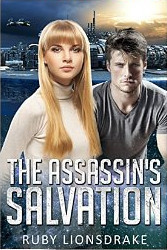
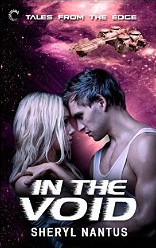
Give me good blurbs to go with these covers, and I’m sold!
As an aside, I’ll often click the lower-star reviews to see what others didn’t like, and I’ve more than once bought a book because of something those reviewers complained about. But that’s a subject for another post.
I could have used my books as an example, but I’m not convinced that mine are the best… Like I said, they’re hard to write.
Blurbs have conventions and sort-of formulas to them in given genres.* Read a bunch of them and you’ll see what I mean. For cross-genre books like mine, the blurb has to set reader expectations for that, too.
Blurbs are almost always written in the third person, though I’ve read the occasional first-person, present-tense blurb that worked. It’s possible to break the rules, e.g., use bulleted lists, make it sound like a classified ad, or even write poetry, but I bet those writers lose sales. I think it’s odd when blurbs for romance books completely omit one of the main characters—they make me suspect I won’t like anyone in the book. Sometimes I’ve bought a book because a few kind reviewers provided the blurb the author should have written, but if the author’s blurb is really incomprehensible, I’m likely not to bother finding the reviews.
I am annoyed when the blurb misleads me, such as implies the book is a genre that it’s not, or omits important elements, or doesn’t mention that the book is actually #3 of a series that I’ll be lost without having read the first two books (again, thank you, kind reviewers wherever you are, for pointing these things out when the author/publisher doesn’t). My novel, Overload Flux , is the first of a series, and I’ve tried to make it clear wherever you buy it; the challenge will come when I write the blurb for the second book.
I have occasionally been fooled when the blurb compelling enough to make me buy the book, but the actual execution of the story doesn’t live up to what I thought the blurb was promising, but it’s pretty rare. More often, I’ve read novels where the blurb is fair but the book was better, and deserved a better blurb.
If I’m on the fence about a blurb, I’ll use the “Look Inside” feature on Amazon to help me decide. I’ve heard of, but never run across myself, independently published novels where the author paid someone to edit only the first part of the book that’s visible in the “Look Inside” section. I hope I don’t run into it, because I consider it [thisclose] to a con job.
Authors, give me a good blurb to go along with a great cover, and I’m halfway to being your loyal customer. The other half is the writing, of course, but you knew that.
_________________
*Resources for guidance on writing book blurbs:
Marilyn Byerly
Mike Wells
Joanna Penn
The post Writing Book Blurbs appeared first on Carol Van Natta - Author.
November 9, 2014
Overload Flux Available for iTunes
Overload Flux on iTunes
Newsflash: Apple users with iPads, iPhones, and Macs can now get their very own copy of Overload Flux straight from the iTunes or iBookstore, and here’s the link:
You may now resume your regular reading activities.
The post Overload Flux Available for iTunes appeared first on Carol Van Natta - Author.
November 4, 2014
Suggestions for Author Websites
Have an Author Website
 First things first: please have a website. I’m astonished when I run into living, still-active authors who don’t have at least a simple page or blog site, but it happens. Bonus if the website is easy to navigate so I can find your books. Amazon and the other retailers are dreadful at displaying the order of series books, even if they’re numbered right in the titles, and most authors/publishers don’t do that. (And let’s not even get started on cases where proper reading order varies from published order.) Retailers have “series” designators, but they’re not particularly helpful either. Therefore, I go to the author’s website to find out the series, other related books, and reading order. I also go to get full descriptions and see your lovely cover art, and find out where I can buy your books. For non-fiction authors, I want to know what other books you have, and if you recommend reading, say, the introductory book before diving into the advanced book.
First things first: please have a website. I’m astonished when I run into living, still-active authors who don’t have at least a simple page or blog site, but it happens. Bonus if the website is easy to navigate so I can find your books. Amazon and the other retailers are dreadful at displaying the order of series books, even if they’re numbered right in the titles, and most authors/publishers don’t do that. (And let’s not even get started on cases where proper reading order varies from published order.) Retailers have “series” designators, but they’re not particularly helpful either. Therefore, I go to the author’s website to find out the series, other related books, and reading order. I also go to get full descriptions and see your lovely cover art, and find out where I can buy your books. For non-fiction authors, I want to know what other books you have, and if you recommend reading, say, the introductory book before diving into the advanced book. Have a Newsletter
Have a NewsletterI also go to the author’s website for newsletters, since the retailers won’t notify me when an author publishes something new I’m interested in. Yes, I know Amazon has that enticing little feature that says “notify me when this author has a new release,” but it doesn’t work—I have received one, single notice for authors I know have newly published books, and it was about three weeks late. I’m surprised at the number of authors who still don’t have newsletters. Yes, I know, they take up time when you could be writing, but come on, I’m asking for information on what you’re doing. If it helps to think of it this way, you aren’t selling, you’re answering my polite question. If you really hate, hate, HATE the idea of writing a newsletter, but you do have a blog, at least offer a way for readers to subscribe to your blog posts. If you’re using WordPress, it’s a simple feature to implement. You can point me to Facebook, and I’ll go there if that’s the only way to find out about your books, but given Facebook’s constant tinkering with algorithms on displaying posts, it’s a crap shoot as to whether or not I’ll see your book release announcement.
——————————MORE————————–
About that List of Books
For the talented author who’s been at this awhile, if you’re going to list your paper-version of a book, I’d love to be able find out if you’ll be releasing an electronic version anytime soon, and if you can tell me, when (or why not?). Especially if it’s in a series. Is it contractual (e.g., rights haven’t reverted)? You hate the book and you’re rewriting it? You can’t say because it’s private/personal or litigious, but you’re aware of the problem? If you’re waiting for the rights to revert back to you, and want to be quiet about it because you think the publisher will give you trouble, don’t tease me by mentioning the book on your website and leaving me to guess.
What’s Next?
I’m interested in what you’re working on and what’s next, if you know. Some authors have writing calendars slated out for the next two years, and some couldn’t tell you what they’re doing next week if their lives depended on it. I envy the prolific authors, because they always have something they can point to, but I’m happy to find out that even slow authors (like me) are working on something I’d be interested to read.
It’s All About You
I like to know a bit about you, but I don’t need a book (hah!). I’d rather read an occasional blog post that tells me what interests you instead of a long, dry bio about your educational background, professional history, etc. Exception 1: If your background informs your writing, e.g., you used to be a military sniper and now you write action-adventure stories, that’s interesting. Exception 2: Your background involves extraordinary jobs (e.g., polishing the space shuttle mirror), seminal events (you were in Iceland when the volcano blew), unusual locations (you lived in an actual treehouse in Costa Rica for a year), etc. And a personal pet peeve, don’t give me TMI — I’d rather read about the interesting characters and worlds of your novels, not the messy, painful, dramatic, reality-TV-worthy world of your personal life. Post that to your personal (not author!) blog or Facebook page if you must.
Extras Are For Your Readers
On extras: I like excerpts, short stories, snippets, cut scenes, character interviews, etc., but I’ll be honest, I don’t read them much. They’re often for books I read too long ago to remember clearly, have spoilers for books I haven’t read yet, or were cut for good reason. Side note: For authors who think “extras” are logos, bookmarks, cover art, etc. for their books, you’ve put them in the wrong place. Those should go in the “Media” or “About” page. The “Extras” page should be for your readers. This, of course, is just my opinion; your mileage may vary.
If you have a forum, and it’s active, let me know, because I might like to see who else is in your community and interact with them. If your forum is mostly dead, or you ignore it, I suggest putting it to rest and moving on. Moribund forums make it look like you haven’t been to your website in quite awhile, even if you post to your blog regularly.
A Note About Design
One last comment: I don’t usually pay much attention to the site’s graphic design, unless it’s really beautiful or really bad. I’m much more inclined to pay attention to user interface, e.g., are the buttons obvious, I can easily find the correct reading order of your series, etc. As is patently obvious from my site, I favor minimalist web design. On the other hand, I really appreciate excellent, artistic work (as long as it doesn’t make it impossible to find what I’m looking for). I don’t often use my smartphone screen to troll author websites, mostly because the small screen is too annoying, but an increasing number of readers do, so I recommend your site be legible and usable on the small screen. If you have a web designer for your site, ask them about a responsive design, one that changes the display to suit the size and capabilities of the device used to view it. My site is designed this way — try resizing your browser window to a much smaller size and see what happens to the various elements as you change the size.
Of course, these are all my personal opinions, and other, smarter people may disagree. Feel free to tell me about it in the comments.
The post Suggestions for Author Websites appeared first on Carol Van Natta - Author.
October 25, 2014
Make My Heroes Beta, Please
OK, that sounds a little snarky, but I’m kind of over the whole larger-than-life, my-way-or-the-highway, macho male role and the fragile (but spunky! or sweet! or nurturing!) female role interplay in fiction. (I’m using “role” here to mean the attributes generally assigned to the genders. I’ve read LGBT and poly romances where one main character or the other could easily be the “male” or “female,” as if that’s the only way two or more people can have a relationship. Oh, please.) I like imperfect people, because I have something in common with them.
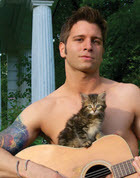 I like men who can cry and be unapologetic about it, and women who can make quick, not-stupid decisions. I like men who think, who can cook, who doubt, who know nothing about cars, and who can touch another man in friendship without worrying that his buddies will think he’s gay. I like women who lack the biological impulse for children, or who can clear a pool table after a single break, or who like math. I like characters with the imagination to see past their own pain. Over at SFR Brigade, Rachel Leigh Smith said, “My perfect hero is a man of compassion.” I agree, and I’ll take it further: both main characters should have it, at least in some measure, or they’re liable to be bitchy, selfish asshats who I don’t want to spend 10 minutes with, let alone the few hours it takes me to read the book.
I like men who can cry and be unapologetic about it, and women who can make quick, not-stupid decisions. I like men who think, who can cook, who doubt, who know nothing about cars, and who can touch another man in friendship without worrying that his buddies will think he’s gay. I like women who lack the biological impulse for children, or who can clear a pool table after a single break, or who like math. I like characters with the imagination to see past their own pain. Over at SFR Brigade, Rachel Leigh Smith said, “My perfect hero is a man of compassion.” I agree, and I’ll take it further: both main characters should have it, at least in some measure, or they’re liable to be bitchy, selfish asshats who I don’t want to spend 10 minutes with, let alone the few hours it takes me to read the book.I prefer reading about balanced relationships, where each participant brings something besides hot sex and love to the partnership. I’m kind of annoyed with the male role having the exciting career/talent/quest that figures in the plot, and the female role having the throwaway career/talent/quest that’s mentioned once or twice. (Personally, I have a hard time understanding how someone wants to be a stay-at-home partner who keeps house and raises children, but that’s an admitted bias on my part, and I don’t judge others who have a different life.)
A paranormal romance I read recently had the alpha-male-shifter character start out thinking the woman’s nursing career as disposable and her fighting skills as negligible, but by the end of the book, he came to realize neither were true and he’d have to change his attitudes if he wanted a long-term relationship with her. Other things about the book annoyed me (I’d have kicked the hero’s ass, metaphorically speaking, a whole lot sooner than the heroine did, and the villains were mostly cardboard cutouts), but the relationship growth plot-line really worked. I’ll forgive plot or pacing flaws when the people in the relationship have to negotiate a compromise for keeping everyone happy and able to make a contribution, and to find that balance.
So, what do you think? Am I wishing I were that kitten on the guitar?
The post Make My Heroes Beta, Please appeared first on Carol Van Natta - Author.
October 18, 2014
Overload Flux Released!
 Overload Flux (A Central Galactic Concordance Novel)
is available today at an e-tailer near you: Amazon, Barnes & Noble, Kobo,
Smashwords
, and (soon) iTunes. It’s a science fiction-action-romance novel with mystery, adventure, corrupt pharma companies, fights, space battles, and strong characters to root for. It’s also the start of a new series.
Overload Flux (A Central Galactic Concordance Novel)
is available today at an e-tailer near you: Amazon, Barnes & Noble, Kobo,
Smashwords
, and (soon) iTunes. It’s a science fiction-action-romance novel with mystery, adventure, corrupt pharma companies, fights, space battles, and strong characters to root for. It’s also the start of a new series.By the way, pretending for a moment that I get a brief “thank you” speech on publication day, I’d like to give salutes to:
My brave first-round beta readers, Ann, T3, John, and Jill, and my discerning second-round early readers Charleste, Reed, Heather, and Roger.
My friend and developmental editor Judy Fort Brenneman at Greenfire Creative)
My professional, communicative, and keen-eyed copy editor (and proofreader and file formatter), Shelley Holloway (Holloway House)
My talented cover art designer Stephen Bryant at SRB Productions
 And most of all, thanks in advance to anyone who buys and enjoys my books, because otherwise, all those story ideas would just be cluttering up my mind and my hard drive.
And most of all, thanks in advance to anyone who buys and enjoys my books, because otherwise, all those story ideas would just be cluttering up my mind and my hard drive.If you’re interested in a review copy, please contact me. Published reviews are the coin of the galaxy for independent authors, and I hope you’ll take the time to post one for Overload Flux.
The post Overload Flux Released! appeared first on Carol Van Natta - Author.
October 12, 2014
On Cover Design for Fiction Novels, Part 1
This is a two-part post written primarily for other independent authors on cover design for fiction novels, with personal opinions and experience galore. There’s a lot to cover (heh!), so let’s dive right in.
Great Cover Design Sells Books
 Fiction covers, experts will tell you, will make or break a sale before the reader even reads one word (not even the title) of an author’s deathless prose. I believe it. We humans are visual animals, and we’re attracted to color and images that intrigue us. There are several authors whose work I’ll read despite the covers, because I know the quality of the work inside. If I don’t know the series or the author, or have no recommendations from friends, it’s the cover that will first draw my eye.
Fiction covers, experts will tell you, will make or break a sale before the reader even reads one word (not even the title) of an author’s deathless prose. I believe it. We humans are visual animals, and we’re attracted to color and images that intrigue us. There are several authors whose work I’ll read despite the covers, because I know the quality of the work inside. If I don’t know the series or the author, or have no recommendations from friends, it’s the cover that will first draw my eye. Covers should tell the reader what’s being offered (post-apocalypse road trip? light-hearted snarky comedy? suspense? epic fantasy? science fiction romance? horror mystery?). The title and author names should be legible. The words and art should balance and complement each another, with the goal of drawing the reader in. “Nice cover… catchy title… intriguing blurb… I’ll buy it.”
As part of my grand project to publish Overload Flux, the first of a planned series, I started researching covers to see what I liked and what I didn’t, and what other independent authors did. It took a lot longer than I thought.
Qualifications, Disclaimer, and Disclosure
First, before we go any further, a bit about me. I’m not an artist, and there are certainly people who know more than me on this subject, but I know something about graphic design and execution from my business and theatrical life. Please check out the opinions and experience of others, too. Now, my biases: I’m a curmudgeon and don’t like the real-people-in-costumes covers for fiction these days. When I read fiction, I’m entering a world of make-believe, and I want the cover to give me the artistic representation of the story and/or characters, not real, vacuously pretty people. I grew up reading genre fiction — science fiction, mysteries, action thrillers, romances, etc. — and loved the covers done for them. That’s probably why I have a strong preference for illustrated covers, as opposed to photo manipulation.
Terminology, and Some Advice
Second, some terminology, as I use it here: “Illustrated” means the content looks like it was created from the artist’s imagination. “Photo-manipulation” means photos of real people, objects, and scenery are stacked or arranged to create the whole. There are hybrids, e.g., photo of a real compass is superimposed on an illustrated map, and images generated by 3-D software. Ebook covers are generally of a ratio of 1:1.5 (width to height), where as full-wrap covers are much wider than high, as they are intended to wrap around a printed book (the width varies by the final number of printed pages). Prices, as of writing this post, range from $50 for a premade cover with vague or abstract elements, to $400-$900 for an up-and-coming illustrator, to $1,500+ for a professional illustrator who makes a good living, to $3,000-$5,000 for a premier, big-name artist. Depending on the artist and what you pay for, you may need additional help from someone else for the font, placement, etc.
Not that anyone has ever asked, but my advice to authors who want to make their own covers to save money: Don’t do it. Unless you happen to be a graphic designer or illustrator, it’ll take you hours (when you could be writing!) and you’ll settle for a mediocre result because you’ll get frustrated. Find other ways to save money, but not on the cover, because a bad cover will cost you book sales. By analogy, if the guy down the street is an excellent plumber, should he be doing his own electrical wiring? If so, remind me to be careful touching the light switches in his house.
What Makes a Great Cover?
I think young adult and steampunk covers are the most interesting these days, an urban fantasy and high fantasy are routinely good. Mysteries have good and bad. Comic-style or graphic novel-style art or cartoons can help or hurt, depending on the book. Some wretchedly bad covers can be found on paranormal romances, wherein random half-naked individuals, animals, bloody fangs, and maybe a moon, are slapped on the cover in random order along with the title and author name (and those are often in illegible fonts). I don’t want to embarrass the authors by posting examples, so I’ll pick on the pre-made covers instead. The problem with real people is the models are hired for more than one gig, and I’ve seen the same woman on more than one cover of very different books. Still, I bet all the above sell better than the abstract, amorphous covers that you can’t even tell if it’s fiction or some sort of spiritual self-help book, even after you read the title.
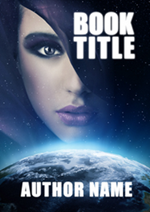
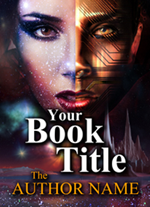
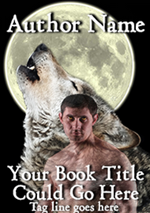
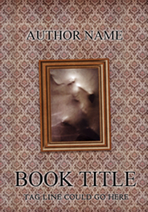
This woman looks
an awful lot like…
…this woman (gotta love Photoshop)
Moon? Check. Animal?
Check. Naked man?
Trifecta!
Horror?
Oil painting?
Interior decoration?
I haven’t made as extensive a study of other genres, so maybe there are some worse offenders.
I understand why Harlequin, which publishes a hundreds of books per year, went to photos of real people with a bit of photoshop wizardry to dress them (or undress them) for their covers — it’s fast and cheap. Harlequin has a formula and it works well for them, but the covers tell me they think of their books as almost interchangeable commodities. I know some excellent authors write for Harlequin, so I’m kind of sad that Harlequin doesn’t think better of them.
My Quest for a Great Cover
I’m really please with the cover for Overload Flux. In part two of this post, I’ll tell you how I got it.
The post On Cover Design for Fiction Novels, Part 1 appeared first on Carol Van Natta - Author.
October 6, 2014
Good Books for 2014 and Beyond
 It’s easy to kvetch about what’s wrong with books these days, and I’m certainly guilty of it. To be fair, I thought I should balance my complaints with some praise about what I think authors are doing right, considering this is 2014, well into the 21st Century.
It’s easy to kvetch about what’s wrong with books these days, and I’m certainly guilty of it. To be fair, I thought I should balance my complaints with some praise about what I think authors are doing right, considering this is 2014, well into the 21st Century.In the romance genre, I like the heroes who truly get the “no means no” concept, even in the face of biological imperatives, such as mating magic in shapeshifter stories, or heat-of-the-moment hormonal rush. It used to be the male characters always knew what was best for the heroine, and somehow that translated into making it his decision as to when/where/why the couple got intimate. In the very bad old days, especially historical romance (a.k.a., bodice rippers) of the 1970s, it was quite unremarkable when the male lead raped the female lead, then later married her because he fell in love. I’m so sensitive to it now that even dubious consent makes me irritable, and I suspect other readers are the same. Progress!
More things I like:
In the science fiction genre, women in combat, who are good at it. The best known is probably the Honor Harrington series by David Weber (e.g., On Basilisk Station, which is free on Kindle), but he’s by no means an outlier these days (see Mike Shepherd’s Kris Longknife series). The SF genre is still dominated by male authors, so it’s good to see gender equality in the writing.
Interracial and international relationships that are more nuanced than the two usual approaches of either adding the characteristic as an afterthought (one passing mention of skin color), or making it central to the relationship (OMG, she’s black!). It’s too easy these days to limit yourself to news sources and opinions that validate your own, so I like stories that acknowledge the differences at the same time as humanizing them. I especially like it when meeting someone from another culture makes the character begin to question his/her own culture and the underlying assumptions.
Cross-genre or mixed-genre stories that defy and transcend marketing slots. OK, this is more than a little self-serving, seeing as I write science fiction-action-romance, but I’m very much entertained by steampunk, which mixes Victorian sensibilities with technological wonders, by second-world fantasies that include technology and romance (check out Lindsay Buroker’s Encrypted series or Meljean Brook’s Iron Seas series). And here’s a shout-out to for SF romance, in the form of a free book: Tales from the SFR Brigade.
What would I like to see more of? Men writing romances, for one. Actually, I imagine there are more than I know, because publishers have believed, rightly or wrongly, that women wouldn’t buy romances written by men, hence the use of pen names. Check out Ed Hoornaert, for example, who used to write for Silhouette as “Judi Edwards,” and now has a new science fiction romance coming out under his own name on October 21. I know quite a few men who are romantics, and I’d love to see how they’d tackle, say, a romantic suspense novel.
What are you cheering about these days, or want to see more of?
The post Good Books for 2014 and Beyond appeared first on Carol Van Natta - Author.

